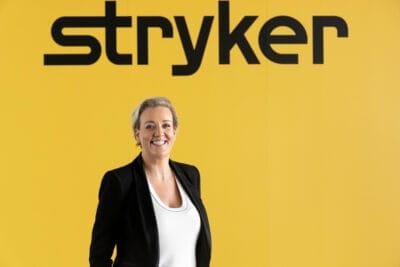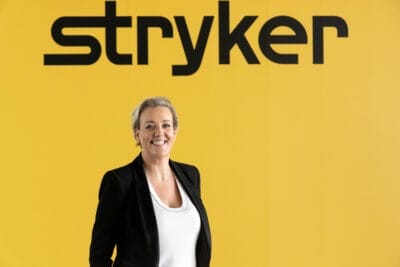
In today’s MedTech landscape, where technological breakthroughs are redefining what’s possible in inpatient care, it’s easy to focus solely on the machines, data, and devices driving that change.
But behind every innovation – whether it’s a surgical robot, a smart implant, or a predictive algorithm – are the people who imagine, build, and continuously improve them. It’s this human engine of progress that often determines whether innovation scales, sustains, and ultimately succeeds.
At a time when competition for talent is intensifying and industries face increasing disruption, how we develop, support, and continuously upskill our people is no longer a ‘nice to have’ – it is a defining strategy.
Ireland’s MedTech leadership has always been grounded in talent, but today, the challenge is evolving. This demands a shift in how we think about talent. It’s no longer enough to hire for existing roles. Instead, it is vital to build adaptable and diverse workforces capable of evolving with new tools, technologies, and expectations.
Diverse pathways into MedTech
Creating a future-ready workforce starts with opening up multiple, accessible routes into the sector, regardless of someone’s background, education, or starting point. Not everyone follows a traditional path into a career, which is why flexibility and inclusivity in attracting and developing talent are so important.
Apprenticeship models are a powerful example. They offer individuals, including school leavers, career changers, and those re-entering the workforce, the opportunity to gain formal qualifications while contributing directly to real-world projects. At Stryker, we’ve seen apprentices progress into engineering, operations, and leadership roles. This is proof that talent can emerge from many directions when given the right support and structure.
Our programme enables participants to pursue degrees in manufacturing engineering while rotating between academic study and on-site learning. It’s not just about gaining a qualification—it’s about reshaping career trajectories and unlocking potential that might otherwise go untapped.
Equally important are graduate entry pathways, which bring fresh energy and new perspectives into the organisation. Each year, we welcome graduates from a range of disciplines to our nine sites across the island of Ireland. Stryker’s graduate programme rotates participants across engineering, finance, and other core functions, giving them exposure to the breadth of the business. It’s not just an onboarding tool—it’s a way to build a pipeline of future leaders who bring curiosity, adaptability, and cross-functional collaboration to their roles.
Together, these pathways – whether through apprenticeships, graduate programmes, or internal mobility – reflect a broader commitment to inclusive growth. By creating multiple entry points into MedTech, including for those coming straight from school or those seeking a new direction mid-career, organisations can tap into a wider talent pool, foster diversity of thought, and build teams that are equipped to lead the future of healthcare.
A learning culture
Offering training and upskilling opportunities is one thing; embedding a culture of continuous learning is another. That means creating systems, time, and initiatives that make development part of the everyday.
Our Training Centre of Excellence in Tullagreen, developed in partnership with IDA Ireland, has been designed to make upskilling a key aspect of transformation.
The three-year training initiative, developed with the support of IDA Ireland, will equip employees at Stryker’s Tullagreen facility with the agility and skills for the future of work, promote innovative thinking, and embed a culture of continuous improvement, and advance sustainability.
But it also reflects something more fundamental: when people feel supported to grow, they stay engaged, motivated, and committed.
That support extends beyond formal programmes. Every employee in Stryker Ireland has access to a LinkedIn Learning licence, providing on-demand access to a wide range of training and development resources. It’s one more way we ensure that learning is not just encouraged, but embedded into how we work, lead, and grow.
Growing talent through opportunity
One of the most pressing challenges for business leaders today is retention. Employees, particularly early career professionals, are seeking to find a workplace that nurture their strengths, provide opportunities to grow and are driven by purpose.
At Stryker, our purpose lies in making innovative products and solutions that make healthcare better for more than 150m patients annually across the globe. It is what drives our employees each day and encourages them to come up with new ideas and find creative solutions to complex medical and surgical problems.
But retention isn’t only about formal programmes. It’s also about creating cultures where people feel seen, supported, and empowered to explore new directions. Our education assistance scheme, for example, has enabled hundreds of employees to pursue new career opportunities, many of them in fields they may never have imagined accessing before.
People powering innovation
The success of any MedTech organisation depends not only on the technologies it develops but also on the people who bring those innovations to life. At Stryker, the commitment to developing talent through apprenticeships, graduate programmes, continuous learning, and leadership development isn’t just a cultural value. It’s a business strategy.
These initiatives have helped build and invest in a workforce that is skilled, diverse, and passionate about achieving our mission of making healthcare better. They’ve driven innovation, improved retention, and strengthened our ability to adapt in a fast-changing industry.
But more than that, this investment is creating opportunities for employees, opening doors for individuals to grow, lead, and make a meaningful impact.
Guest post by Mag O’Keeffe, Vice President of Global Additive Technologies at Stryker
